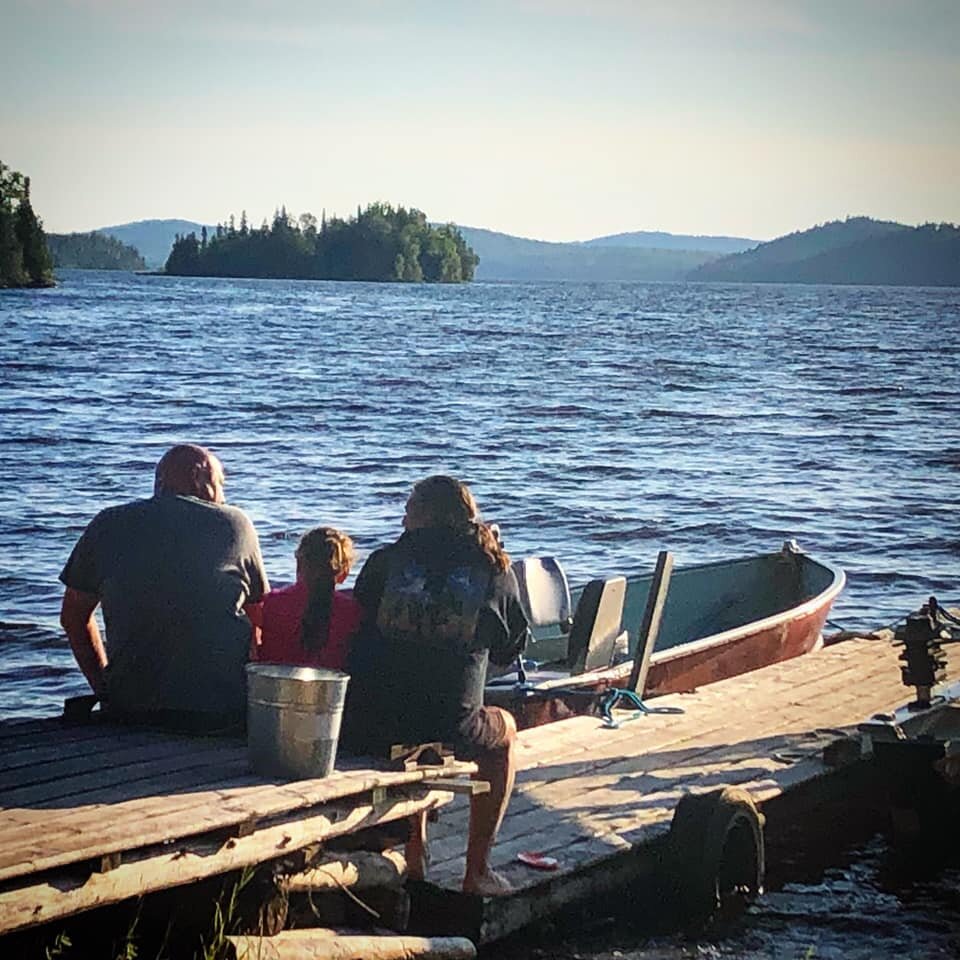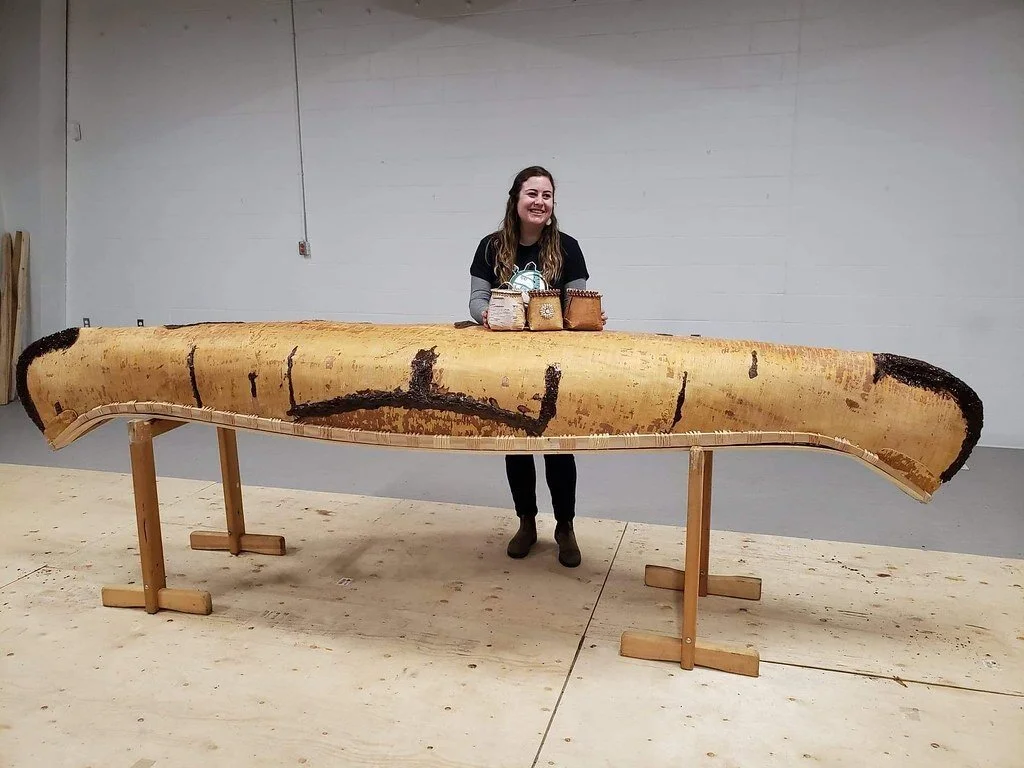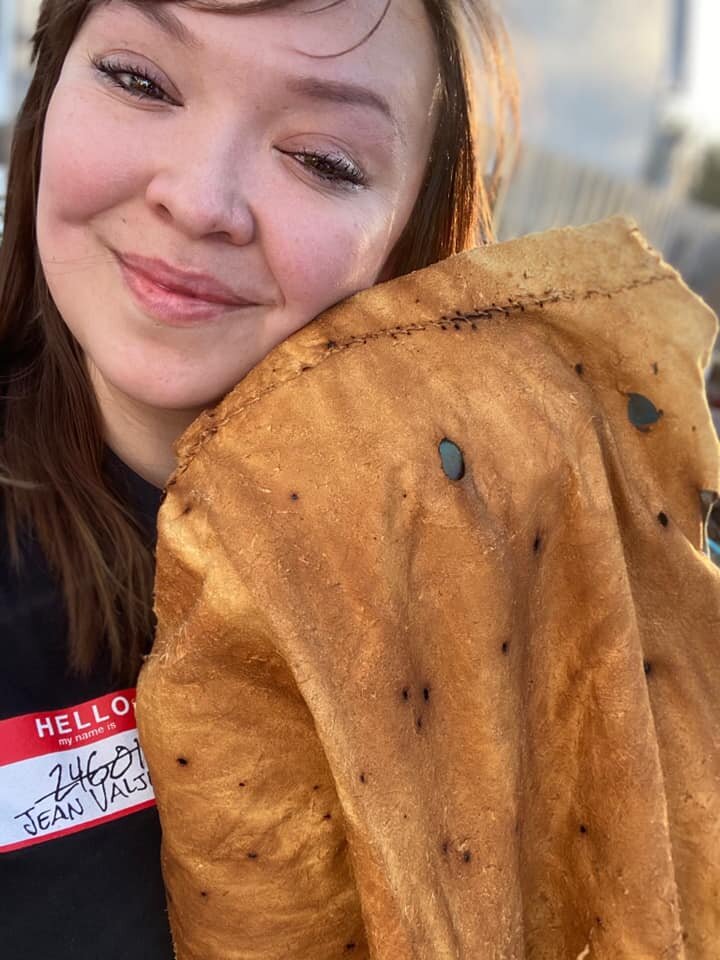The 2021 Virtual Guardians Gathering was a great success.
With over 8,000 public views and 600+ registered participants, the gathering brought together Indigenous leaders, Guardians and allies from across the country, united under the theme “Zhundaa Gogha Ełehé Ats’et’ı̨” meaning, Together for Our Future.
From IPCA’s to Guardians work on the ground to how we can collaborate with each other and Government, the Gathering created a space for sharing and building, in the name of protecting the lands & waters we all rely on.
Below, find videos of each day’s sessions, documents from the gathering, photo voice stories, and other resources to relive the event.
And take a look at the blog post from Deputy Director Dahti Tsetso below, to hear some of the highlights from the Gathering.
Recordings of the 2021 First Nations Guardians Gathering
The Guardians Gathering spanned four days, including Sharing Circles, presentations, and an awards ceremony. Below, you can find the events of each day and direct links to recordings of each session.
Day 1: Inspiring & Educating about the Value of Indigenous-Led Stewardship & Guardians Programs
Watch here:
Welcome & Introduction of Elders for Opening Ceremony by Dahti Tsetso
215 Seconds of Silence and Reflection with Bev Sellars
Opening Ceremony: Fire Feeding Video led by Chief Gerald Antoine and Dene Elders
Opening Remarks by Valérie Courtois & Introduction of Nigit’stil Norbert
Sharing Circle with Guardians moderated by Valérie Courtois with Shauna Yeomans-Lindstrom, Taku River Tlingit, Tanya Ball, Dena Kayeh Institute, Amberly Quakegesic, Wahkohtowin, William Alger, Edéhzhíe Protected Area
Review of Graphic Recording with Nigit’stil and Valérie Courtois
Closing Remarks by Michèle Audette
Day 2: The Heart of Guardian Work
Watch here:
Welcoming Remarks with Dahti Tsetso and review of previous day’s Graphic Recording with Nigit’stil Norbert
Opening Keynotes by Honourable Ethel Blondin-Andrew P. C. & Deputy Grand Chief Mandy Gull
Sharing Circle with Storytellers moderated by Chelsie Parayko, with Qátuwas Brown, Haíɫzaqv Climate Action, Cody Anderson, Nisichawayasihk Cree Nation, Robby Dick, Ross River Dena Council, Lisa Shepherd, Dena Kayeh Institute
Guardian Photo Story with Dahti Tsetso - Charlotte Denny Earth Keeper Unama’ki, NS
Guardian Photo Story with Dahti Tsetso - Hannah Martin, Earth Keeper, Millbrook First Nation, NS
Guardian Photo Story with Dahti Tsetso - Jack Penashue, Labrador, Innu Nation
Review of graphic recording with Nigit’stil Norbert and Dahti Tsetso
Closing Remarks with Bev Sellars
Day 3: The Environment of Guardianship Programs
Watch here:
Welcoming Remarks with Dahti Tsetso and review of previous day’s Graphic Recording with Nigit’stil Norbert
Story of the National Guardians Network and Q&A with Miles Richardson, O.C. Moderated by Valérie Courtois
Overview of the Role of the Joint Working Group and Moving Forward with Loretta Bayer and Julie Boucher, JWG Co-Chairs
Guardian Photo Story with Dahti Tsetso - Ashley Menicoche, Edehzhie, NWT
Fireside Chat with ECCC Minister Honourable Jonathan Wilkinson on the Federal Budget Allocation for Guardian Programs and IPCAs moderated by Valérie Courtois with Lisa Young, Unama'ki Institute of Natural Resources, Jimmy Morgan, Gitanyow Huwilp Society, Chief Heidi Cook, Misipawistik Cree Nation, Chief Gordon Planes, T’Sou-Ke First Nation
Guardian Photo Story with Dahti Tsetso - Jennifer Simard, Director of OPG Relations, Moose Cree First Nation, ON
Sharing Circle on Indigenous Leadership in Stewardship: Stories of Emerging & Established IPCAs moderated by Steven Nitah, with Gillian Staveley, Dena Kayeh Institute, Gregory Jeddore, Miawpukek First Nation, Stephanie Thorassie, Seal River Watershed Alliance
Guardian Photo Story with Dahti Tsetso, Arial Sanguez, Edehzhie, NWT, Isabelle Allen, Wahkohtowin, ON
Review of graphic recording with Nigit’stil and Dahti Tsetso
Closing Remarks by Frank Brown
Day 4: Lessons Learned: Sharing Successes & Challenges
Watch here:
Welcoming Remarks with Valérie Courtois review of previous day’s Graphic Recording with Nigit’stil Norbert
Opening Remarks with Honourable John Horgan, Premier of British Columbia, Video Message
Sharing Circle on Lessons Learned on Building Guardian and Stewardship Programs from the Coastal Stewardship Network moderated by Dahti Tsetso with Ross Wilson, Metlakatla Stewardship Society, Ernest Tallio, Nuxalk Coastal Guardian Watchmen, Vanessa Bellis, Haida Fisheries, Lara Hoshizaki, Coastal Stewardship Network
Guardian Photo Story with Dahti Tsetso - Jimmy Morgan, Lead Guardian, Gitanyow Nation, BC
Welcome back and Guardian Photo Story with Dahti Tsetso and Blythe Commando, Guardian, Kitigan Zibi Anishinabeg, QC, Cody Anderson, Nisichawayasihk Cree Nation, MB
Guardian Photo Story with Dahti Tsetso - Gregory Jeddore, Natural Resources Manager, Miawpukek First Nation, Labrador
Welcome to Recognition Celebration & Closing Ceremony by Valérie Courtois
Collaboration Award to the Joint Working Group on Guardians presented by Frank Brown
Indigenous Guardian Ally Award to Steve Kallick (IBCC) presented by Valérie Courtois & Dave Porter
Emerging Leadership Award to Jean-Luc Kanapé presented by Michèle Audette
Outstanding Individual Leadership Award to Jarett Quock presented by Norma Kassi
Trailblazer Award to Captain Gold presented by Bev Sellars
Musical Performance by Leela Gilday
Review of graphic recording with Nigit’stil and Valérie Courtois
Closing Remarks for the Gathering by Dave Porter
Closing Prayer by Dene Elder
Graphic Recordings by Nigit’stil Norbert
Artist Nigit’stil Norbert created a graphic recording of each day of our 2021 Guardians Gathering, as show below. Each image contains a summary of the days highlights and important events. Take a look to relive the event
Click to enlarge each image
Documents & Resources
Below are select documents that were shared during the Gathering, including full transcripts of Keynotes, discussion documents, and powerpoints.
Opening Keynote: Ethel Blondin-Andrew - Day 2 First Nations Guardians Gathering 2021
This is the full opening remarks from the Honourable Ethel Blondin-Andrew’s speech during Day 2 of the 2021 First Nations Guardians Gathering. She is a Shútao’tine (Mountain Dene) from Tulit’a, Northwest Territories (NWT), and a Senior Leader at ILI. In her speech, she spoke about her experiences at residential school, her youth, the power of Indigenous leadership, and the work of Guardians.
Joint Working Group Federal Funding Placemat - Day 3 First Nations Guardians Gathering
This document from the Joint Working Group (JWG) outlines the pathways and funding sources for Guardians programs and other Indigenous-led conservation Initiatives. This was shared on Day 3 of the Guardians Gathering as part of a presentation from JWG co-chairs Loretta Bayer and Julie Boucher.
The Business Case for a National First Nations Guardians Network - Day 3 Executive Summary
Momentum has been growing behind calls for a National First Nations Guardians Network. Since time immemorial, First Nations have honed our knowledge of the best way to care for our lands, waters, resources, and people. Today, there is increasing recognition of the role our knowledge can play in ensuring the best stewardship. Learn more by reading the Business Case for a National First Nations Guardians Network below.
Project Summary - Day 4 The Great Bear Rainforest: Indigenous-led Conservation from a Heiltsuk Perspective
The Indigenous Leadership Initiative is proud to announce a new stewardship project that tells the story from the perspective of Heiltsuk First Nation hereditary chief Frank Brown of how Heiltsuk homelands at the heart of the Great Bear Rainforest came to seed Indigenous stewardship and guardian programs on the Pacific Coast, emerging as an early form of modern Indigenous-led conservation.
Guardians Photo Voice Wall
From salmon restoration along coastal waters, to monitoring the mine and industry activity, to leading workshops for Youth & Elders and passing on culture and tradition, Guardians do it all.
We asked Guardians at our 2021 Guardians Gathering to share glimpses of what it’s like to be a Guardian — whether it’s a favourite place on the land, wildlife, a sentimental belonging, or an image that shares a time they were proud to be a Guardian.
Be inspired and get a glimpse at what this looks like firsthand from Guardians Photo Voice’s below.
“Thank you for accepting my photos. And I just want to start off by saying my name is James Morgan, everyone calls me Jimmy. I work for the Gitanyow Hereditary Chiefs as part of the Gitanyow guardian program. Over the years, it's been myself and these two guardians that you see in the photos, Dustin is in the middle left, and Greg Johnson is in the middle right.:
For the longest time, basically we started in 2007 with a moose monitoring program officially, as a guardian program. We've had fisheries as a mainstay, but a guardian program officially started in 2007. It was just myself and Greg Johnson and Dustin was our third, our backup, but very reliable, both of them
And over the past few years, the main part of my story is about teaching, learning, mentoring, and strengthening your team. Like I said, at the beginning, it was just Greg and I.”
- Jimmy Morgan
(cont) “We both took a lot of training and now we pass it on to each other as much as we can because strengthening that team is very important. I'm not always around there all the time, so I'm able to lean on both of these guys to do very important and high level surveys and whatnot. So in the photo, you can see that we are doing a water level survey with the survey tripods there.
With the survey tripods there, also in the water there, we're doing a water flow survey. This is important to our lakes and our streams. It's a huge hydrology project. We are understanding how much water is flowing in and out of each area and also the temperatures of each tributary and what that does to affect the lakes themselves. So another main part of my story is that biologists and hydrologists are very important, but ultimately become very busy. So programs that have the ability to send out guardians to do these high level surveys.”
- Jimmy Morgan
(cont) “They actually save a lot of money for the program because they're able to do these high level tasks and the biologists and hydrologists sign off on them. So in reality, once your guardian program grows very large, it's going to be leaned on to do many things, not just your main programs or projects, but people will be calling in to check on water levels. Like my guardians are right now, they're not able to be here at this time because they are flying drones and checking for eroding riverbeds and such for the next village over. Very, very busy and they get called upon all the time, which is why you need more than one or two or three guardians that really know what they're doing. So in closing, I just want to say again, I'm really proud of Greg Johnson and Dustin Gray for all that they do for their community, their house groups and their nation as a whole.”
- Jimmy Morgan
“So this is our photo. This is our Land Guardians that did all the work over the last number of years to get close to where we are today in developing IPCA within our territory. That covers a very large portion of land and over 466,000 hectares, which of that, by 260,000 will be IPCA and a part with the Canada. So in this picture, the Guardians are doing work here. We first time we ever seen a mush rat house within our territory in over 40 years. They were trapped out way, way back and industry came in and a lot of the laboratory ecosystems were destroyed, but we managed to capture this along their trails. And so what we done is that we stuck a trail cam help on the tree beside the host to hopefully we'll capture a video of the mush rat. So over time and time of viewing photos and videos. And finally, we captured the first mush rat in over 40 years, that is coming back to our territory. And the elders always talked about, they were so plentiful and they captured him for food and their furs. And so this was like historical moment for the Guardians. And they were really happy and the say, well, we got to get a bonus for this. And I said, what's that? Well, we got to get a day off. Oh, okay. So you guys get a day off, but this is not the only animals that we're finding now, or first time where he captured pine martin on the trail cams as well. If we find better to try to set up these cameras, through it territory to capture the live capture of Hannibal that never existed here before. And they're coming back, and this is one full because of these fine gentlemen, the land Guardians on the land and doing all the hard work, collecting data and making sure everybody is winning our territory is respecting.”
- Greg Jeddore
So, on the left side, we have two of the Edéhzhíe Guardians. And on the right, I think we have Henry and Richard, and they are all the Guardians. And I'm just going to pull up my notes here. So, these Guardians, so four of them were out patrolling and harvesting on the Willow Lake within the Edéhzhíe protected area and two of the river guardians had the opportunity to go out with the two local day guardians this past winter. And they were very fortunate to have harvested trout, Northern pike, and Whitefish in the Willow lake. And in sharing these photos they were using traditional ice triggers to set these nets under the ice. And that consists of one long dry stick tied to another wide stick to string the fish net under the ice. And I found this so amazing to see through the guardians, the lenses and the breathtaking photos that they show me were they are out patrolling.
- Arial Sanguez
(cont) “And when they sit down and explain their experiences and the photos they have taken, and the traditional knowledge transfer and relationships built over time on the land with the LABA, with the elder guardians and the younger generation is something that I feel like is a treasure that is continuing on today. Aside, from like the generation gap, from the younger to the elder guardians that we have in the Dehcho region. And yeah, just see so much beauty in the photos that they take through the Guardian's lenses. And I just take pride in the work and I just see it lighting up their eyes and we have to come back and be like, oh, we did this. We went harvesting. And then all the tracks that they see in the Edéhzhíe and I just found it really astounding and very proud of them and all the guardians of the work that they do out on the field, out on the land, and very, very fortunate to have these guardians out there on the land for us.”
- Arial Sanguez
“So this photograph is from a land-based program that Ashley ran with her guardians last summer, last July, last August, I believe, she ran an Edehzhie moose hide tanning camp where she invited people to come and learn about the protected area while also engaging in moose hide tanning. So it was a way to build cultural identity, create community connection, and share information on the protected area.
In the background, you can see one of our Edehzhie guardians. That's Henry Sabourin, helping with the moose hide. So thank you to Ashley for sharing her photograph. I wish you were able to join us so you could have shared this story in your own words, but happy training.”
- Ashley Menicoche
“Creature Lake, Memekueshu. What else can I talk about these people? Like I said, they're like regular people. They don't associate with civilized or contemporary world. They are people that we have a conversation in which that they need us as we more, we need them. And they're part of our lives as Innu people and as guardians, it is essential that we protect this area. And through social media, we've been very, very secret, like any other first nations communities in this world. Sometimes our stories are secret and we don't normally would share that to other people, but because of social media and everything else in the last 10 years or so, our oral history or oral stories have been translated.
And then through research, through investigations and everything else, people have found where they live. This is something that is critical to us, that we need to protect this area because of its sacredness. And that has been our role, I guess, in terms of guardians. Our role as Innu people. We don't go in there to disturb. We go there to communicate and have those discussions, but not be too disturbing and take away anything. So we as guardians here in Changi, in Labrador and this unit, we have a very, very important role that we play as guardians. And it's not just in terms of environment, in terms of water and conservation, in terms of wildlife, we have a better, bigger role that we play here in Labrador. And so we encourage other people as well to somehow, someway understand that not every guardian is protecting the waters, the environment, the wildlife. We go beyond that. We also are protecting our ancient and oral history of the north stories about our people.”
- Jack Penashue
“My name is Hannah Martin and I'm from the Traditional Unceded Territory of the Mi'kmaq. So the photo that I'm showing today is a picture of me with one of our Sacred Black Gash Trees, last year in the summer of 2020. And the story behind this tree... I should start off with saying that three the Black Ash are sacred for us as Mi'kmaq People, is that we have a long History of working with this tree as a craft wood. Our livelihood as Mi'kmaq People is in part focused around this particular species and we traditionally use it for baskets, which you can see, there's a basket featured in this photo made of black Ash. And we also use this tree for things like tool handles, canoe ribs, snow shoes, musical instruments.”
- Hannah Martin
“Greetings. My name is Charlotte Denny. I am from the Traditional Unceded MIMA Territory of the Maritimes from Eskasoni, Nova Scotia, the largest MIMA Reserve East of Montreal. I am MIMA Natural Resource Technician for our Un Magee Institute of Natural Resources. I work with the New G [foreign language 01:56:15] Earth Keeper Network, and that is being developed here in Nova Scotia. And our Earth Keepers are Guardians of our Traditional Territories to ensure proper harvesting of Wildlife Medicines, Natural Resources, without compromising its sustainability for future generations. This is a picture of me and my fellow observer during a Moose Survey in the Cape Breton Highlands National Park in Nova Scotia. It's a part of a Comprehensive Moose Management Plan that was developed in partnership with MIMA Grand Council, Una Magee Council of Elders, the Provincial Government, and the Federal Government.
The Moose of Una Magee, were enlisted endangered in 2003, and the need to survey its Population, Distribution, Composition, and Sustainability of Harvest Levels. In 2004, the Survey Population was approximately the 4,200. So the Aerial Surveys, we go out and we survey the animals from 300 feet up. We basically have a team of four to five inside the Helicopter, and we document the Population in given six. There's Rectangular six, and the entire Cape Breton Highlands Park is all mapped out in different sex. And we pain stinkendly fly through each sect of the Highlands and calculate the numbers.
The Moose Aerial Surveys plus the Hunter Reporting Data is important for calculating the Moose Populations and it's Health. So I participated in this Moose Aerial Survey in February 2020 in Partnership with Nova Scotia Department of Natural Resources and Parks Canada. Picture here in a Helicopter with a fellow observer from Parks Canada. I don't have any pictures of any Moose, unfortunately, because the fact that we couldn't effectively observe the Population and take pictures at same time. We're lucky we had a staff... 10 staff volunteers, and of our Una Magee, and Institute. And with the help with Parks Canada, and Department of Natural Resources. We had 12 flight days.
A little History of the Moose, the Cape Breton Moose is from the Introduction of 18 LGS and Discerning Moose from Alberta that were introduced in 1947 and 1948. The Population exploded in numbers. But like I said before, there was a decline in Population in 2003, which led to them being listed endangered. So the exact number of Moose that we surveyed in February 2020, it's not really given to the General Public, but the current Population is showing sustainable Harvest Levels with the numbers above 10,000 I would say.”
- Charlotte Denny
“Hi, my name is Blythe Commando, I'm from Kitigan Zibi. I have been a guardian community for the past two and a half years. And as most communities, ours has noticed a steep decline in moose population on our traditional territory. In the past two years, Algonquin nation has put pressure on the government for a moratorium on the sport hunting a moose. An attempt to address this concern, an aerial moose survey was done to assess the population of moose and the [inaudible 01:18:46], which is located just north of our community. The survey was carried out by the provincial government and the Algonquin nation. Once the survey was completed and the data was analyzed, the government disagreed with us in the decline or the moose population and came to the conclusion that it was a healthy population for one that is hunted. The following season, Algonquin nation proceeded to erect roadblocks to restrict access to hunt sport hunters on our traditional territory. And this has carried off mainly on the grassroots level.
Currently negotiations are still being carried out, but this was being done on a political level. The picture that you see was taken by my partner and I this winter and by using the training and experience that we received during the aerial survey, we were able to... Using drone technology we transfer into that. And after two days of flying, following old moose tracks, we then came upon fresh tracks. Once this happened, then an intensive grid pattern was flown until you were able to locate the herd. Once the herd was located, we proceeded to fly a circular pattern in order to identify it as sex of the herd. To me, this is a very awesome moment because after seeing moose in their natural habitat from the air, I didn't think I'd witnessed that again until that moment, there are other ways that we use drone technology and in our field of work. To name of few, would be checking road access, identifying stick nests, and flying over cut blocks, the sea of creeks and waterways being illegally operated by forest companies. The most recent application that we executed using drone technology, as we were able to locate the critical habitat for wood turtles. Once we were able to locate the specific site by air, we then proceeded by foot to the site and upon inspection, we then located five wood turtles, and we were able to verify that it is in fact, an active nested site. And So best to say, thanks for listening to me. And if anyone has any questions about the use of drones, I will be more than happy to help.”
- Blythe Commando
“This photo always fills my heart and reminds me of the responsibility I have as a Cree woman to share knowledge and to take in and love up knowledge that is shared with me. Pictured is my uncle, cousin and niece, Neila. The two men were sitting on the dock enjoying each other’s company and sharing. Neila walked up and squeezed herself in between the two. She sat there for 20 minutes listening, absorbing and learning. The land, the knowledge, guardians and the relations.”
- Chelsie Parayko
“My name is Isabelle Allen. I am a member of the misdemeanor first nation from North Eastern Ontario. I've been working for the last three years as the Project Forester for Wahkohtowin , which is a development corporation owned by three first nations in the North East Lake Superior region. If you were able to tune into the opening panel on Tuesday, you would have heard from our wonderful gradients Program Coordinator, Amberley Clark, our guardians program is really focused around connecting youth to the land since we live in area of the Boreal forest, where forest industry is pretty prominent. A lot of our programs are forest based. One of the key elements of our guardians program is Birch. So we do Birch syrup production in the spring time. And last summer, we were able to build a Birch bark canoe in the fall.
And we also learned how to make birchbark craft throughout the summer. So this photo on the left shows me in the Bush looking pretty happy after harvesting a big roll of birchbark. We learned that it was quite the process to find a tree that had the right quality and thickness of bark, to be made into a canoe. So even though it took a while to find a suitable tree, I really enjoyed the experience of being on the land because unfortunately, a lot of my work has ended up being behind a computer, but it was so exciting to find the right tree and put down tobacco and harvest the bark with my co-workers. It really gave an appreciation of the way our ancestors would have used the resources on the land. And I think that made us more aware of the value of the materials that we were using while building the Birch baskets and the canoe.”
- Isabelle Allen
“This photo shows me, I am wearing my Guardian's t-shirt, I'm standing with the canoe that our team built and some of the baskets that I built any of the birchbark or spur roofs, spruce roots that we harvested that were not thick enough or strong enough to be used for the canoe. We used to build crafts like the Birch baskets. Our teacher, Chuck, Amanda told us that an expert basket maker would be able to stitch a basket that was water tight. So I do not think mine have quite met that standard yet, but I enjoyed the creative process of decorating them. Overall, our guardians program was one of the most fulfilling experiences of my career and probably my life. And I am excited to get back to shop low and start harvesting materials, to do another bills with our youth, the guardians in a few weeks time. And I wanted to say, thank you for inviting me to share today. I find the Guardian's gatherings so inspiring and reaffirming that we re on the right path.”
- Isabelle Allen
“Here's my photo for the Guardians Photo Voice. I was helping my co-worker Amberly Quakegesic open up the Birch shack in Chapleau Ontario back in May, when this little fox stopped in to see what we were up to. A part of our Guardians program is collecting Birch sap and making Birch syrup in the Boreal forest, I love having the opportunity every spring to get out on the land and reconnect with the ones who live there”
- Isabelle Allen
“I’m not an official guardian, but I am the director of operations at the Seal River Watershed Initiative/Alliance.
The photo that I wanted to submit is one of me and my caribou hide that I tanned in my backyard of my urban home in Winnipeg.
Smoky red eyes, a dirty face, and pure joy. This is the authentic me. I love to be able to create like our elders created, and to share this knowledge to our youth is of utmost importance!
Being a guardian means practicing our cultures, and for me during this pandemic it means practicing my Dene culture where ever I may be.
As soon as I am able to, I will be home in Sayisi-nene tanning hides with my Granny out on the land. It’s where my spirit feels most full.”
- Stephanie Thorassie
“Here is my photo, captured by CBC, for the Photo Voice... I arrived early and cooked fresh fish to welcome Canada's Minister, etc. to our Thaidene Nene Indigenous Protected Area back in 2019, I answered questions and asked a few myself... all for our future generations and their continued ability to exercise our sovereignty... included in this photo is my Uncle Archie Catholique and Elder Albert Bouche”
-Stephanie Poole
K’ahsho Got’ine Guardians at our winter camp at Narehten. Joseph Tobac, John Tobac, Twyla Marcie Edgi, and Buddy Gully, Shaun Tobac & Matthew Cotchilly. This was our first camp together as a team. We went from -50 to -12 over 10 days; it was busy and beautiful. A great start, leading to a culture camp weeks later.
- Alexa Scully
These photos are from Temagami First Nation territory n'Daki Menan. Adrienne Alexandra is a Climate Change Researcher at Temagami First Nation. She shares “We are not funded by the Guardian Program in Canada, but we do have an environmental monitoring program which we are just wrapping up! ur project has really evolved over the 3 year period and has really built up much more than originally anticipated. We have really focused on water quality and weather parameter monitoring.”
(cont) “We also work hard to monitor and manage invasive species in our traditional territory and document species when we do field monitoring. All the data collection has really added to our ability to add value layers in GIS which we use to track species and it can be helpful in consultations or just helping our members locate species of interest.
We have also been attending meetings and workshops in regards to provincial and federal governments response to climate change and been looking at their policies and how they affect/will affect our community.”
(cont) “It is something that we keep up with an do our best to keep a close eye on while representing our community and upholding inherent rights.
During our project we have done our best to create capacity building opportunities for community members by providing mentorship and meaningful employment opportunities.”
- Adrienne Alexandra
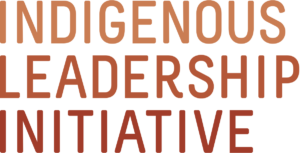

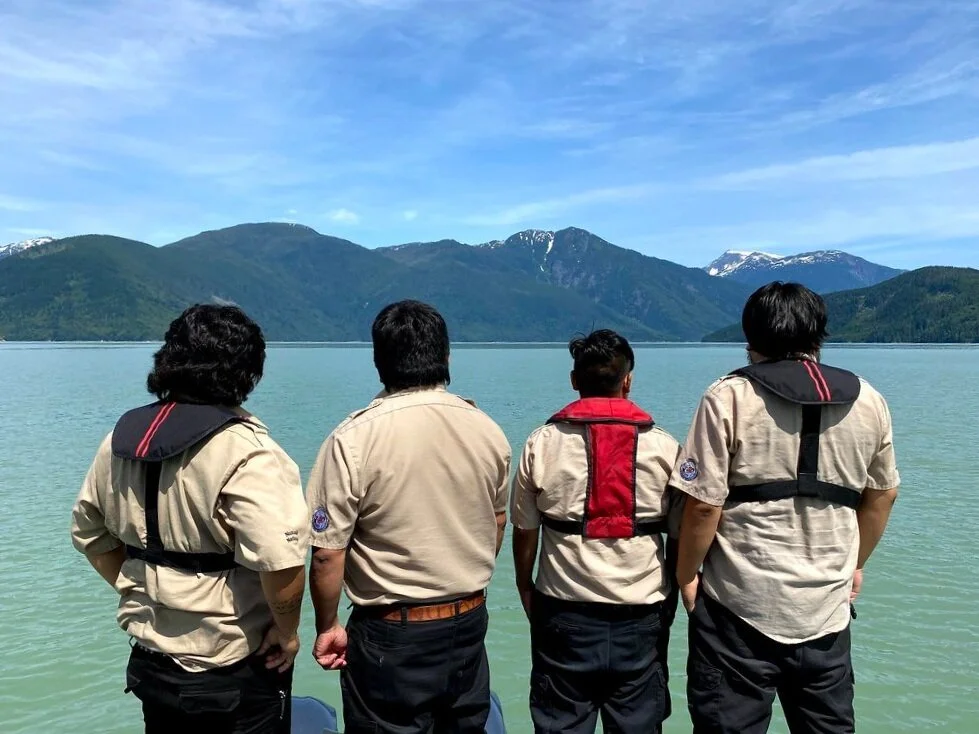
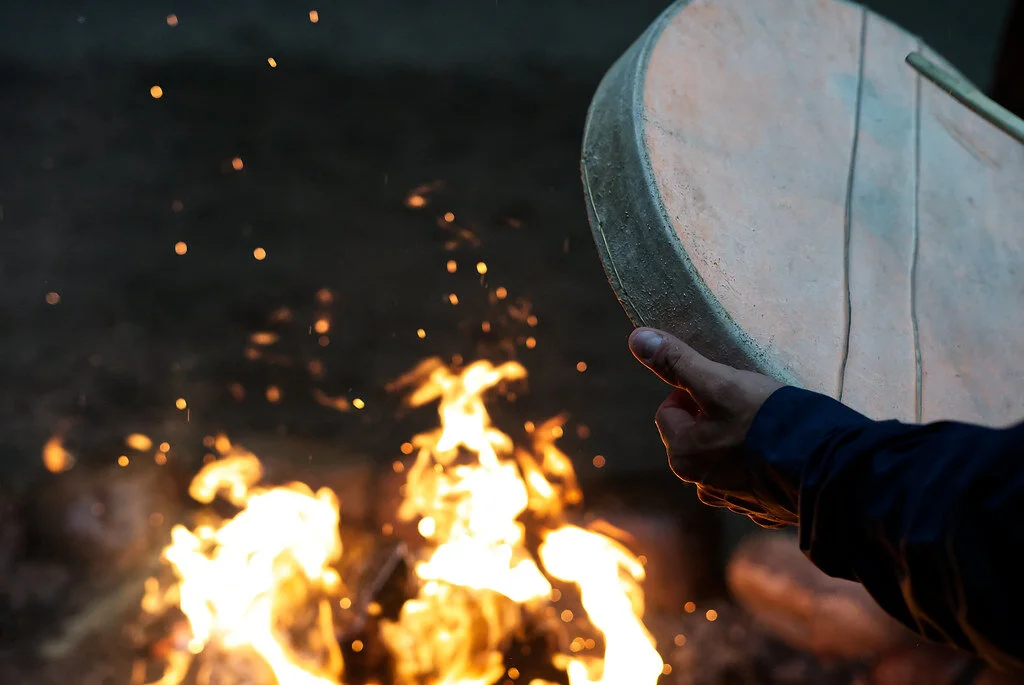
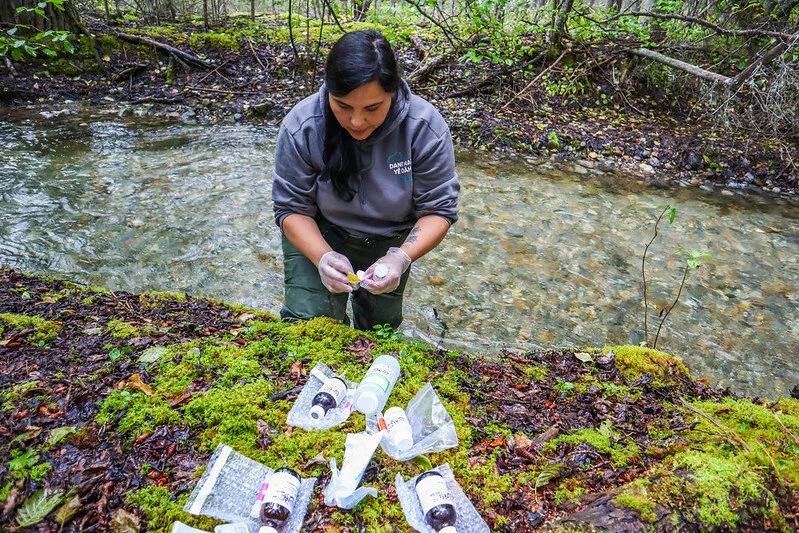

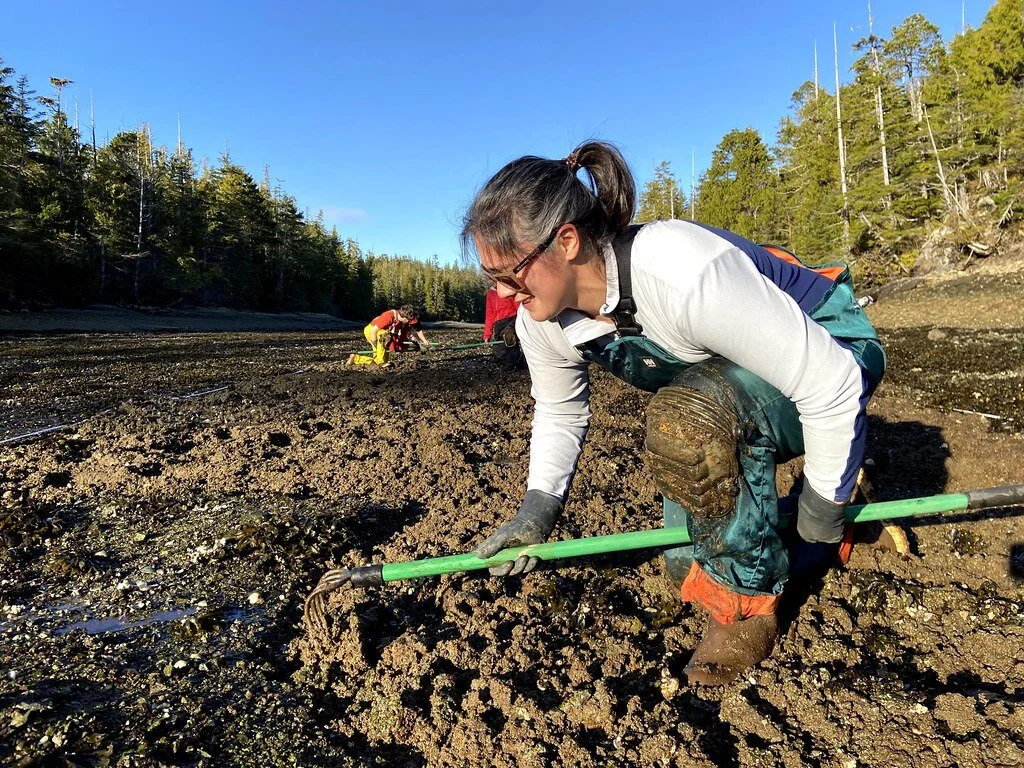




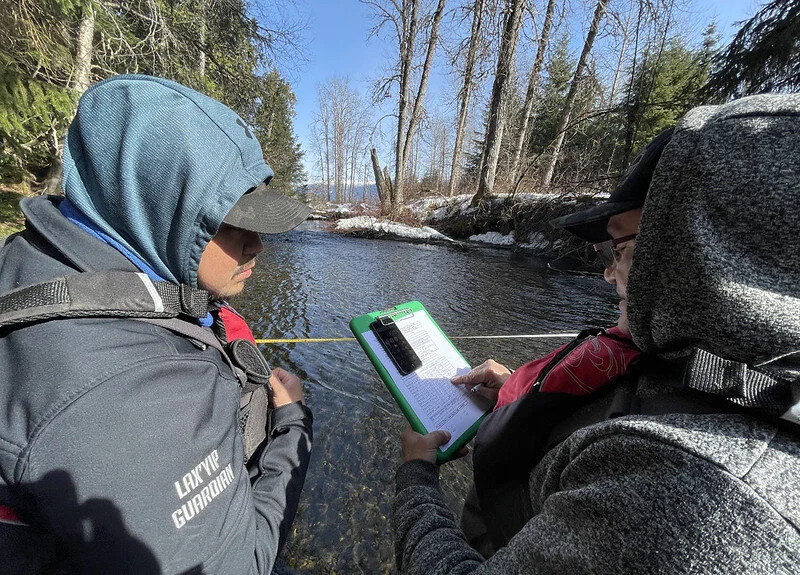
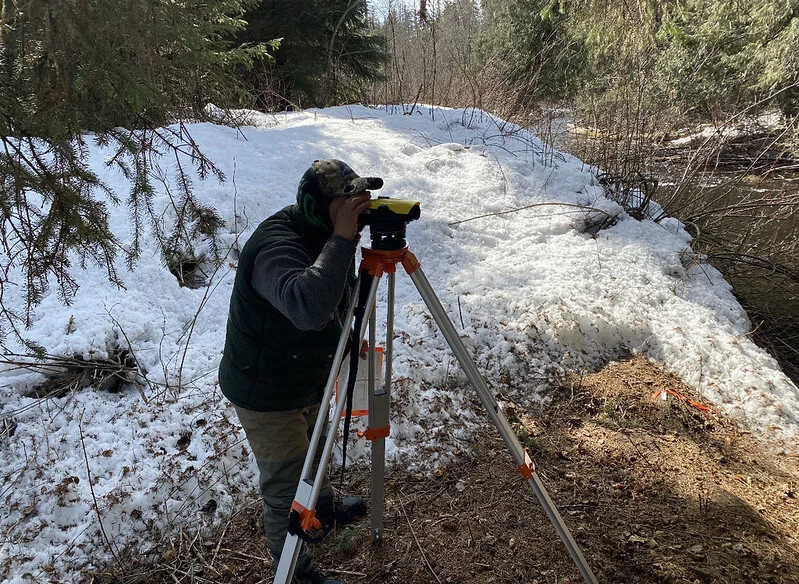
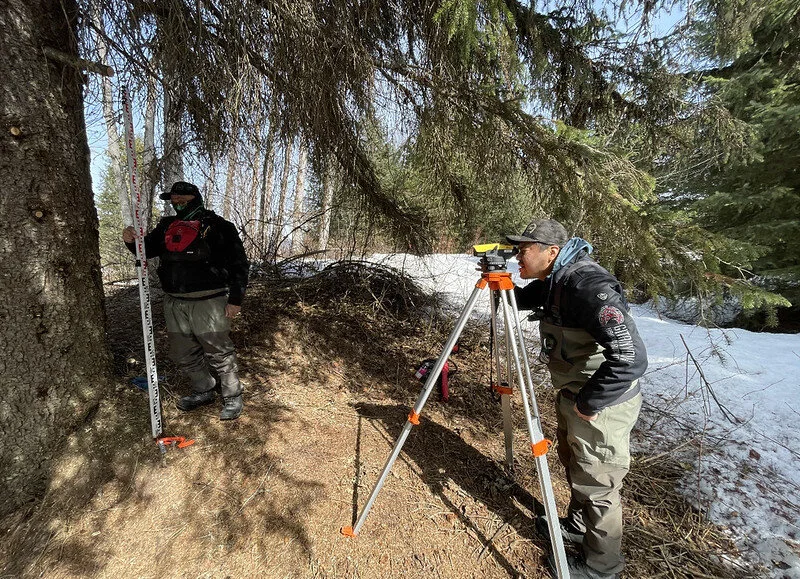
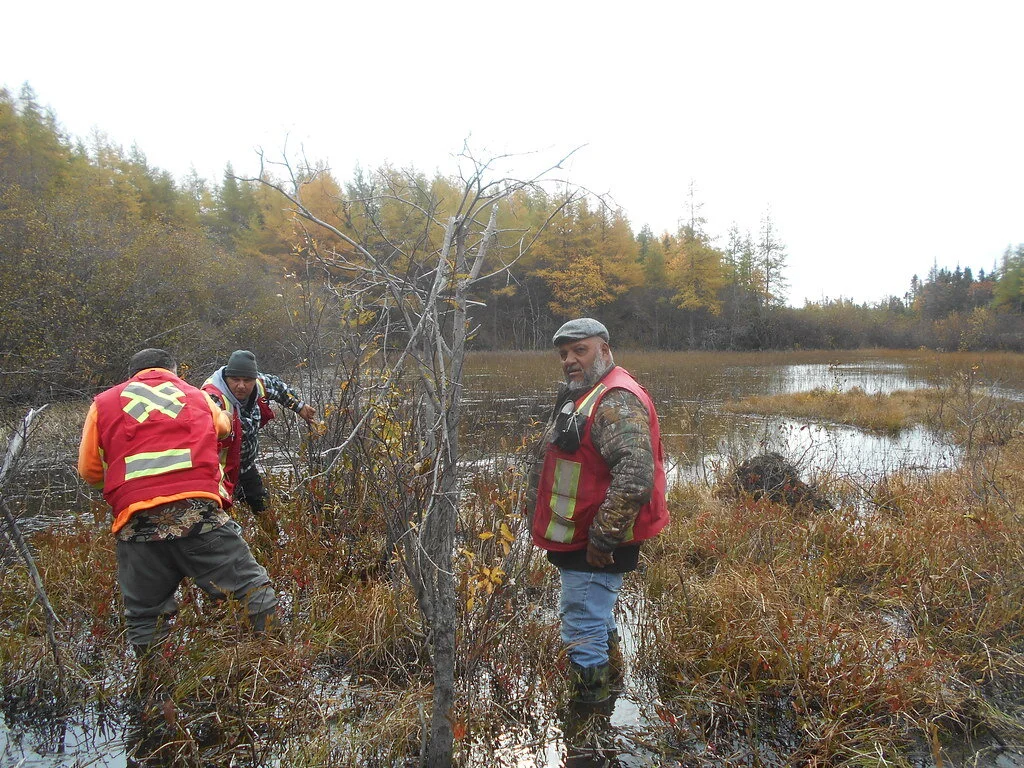
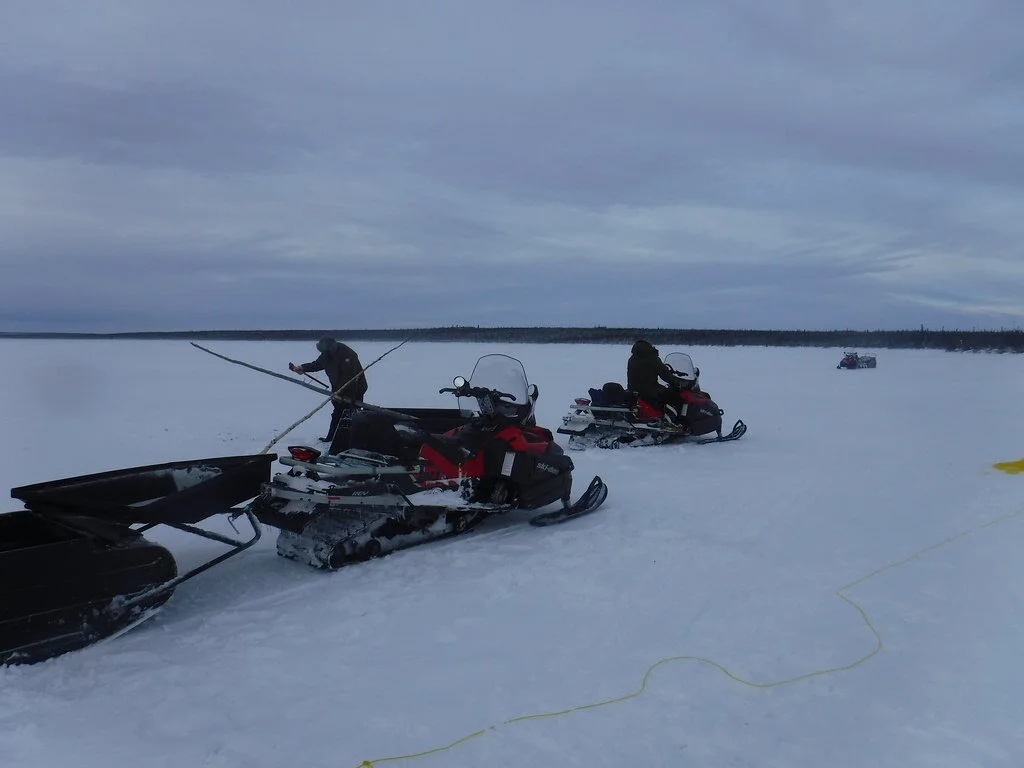
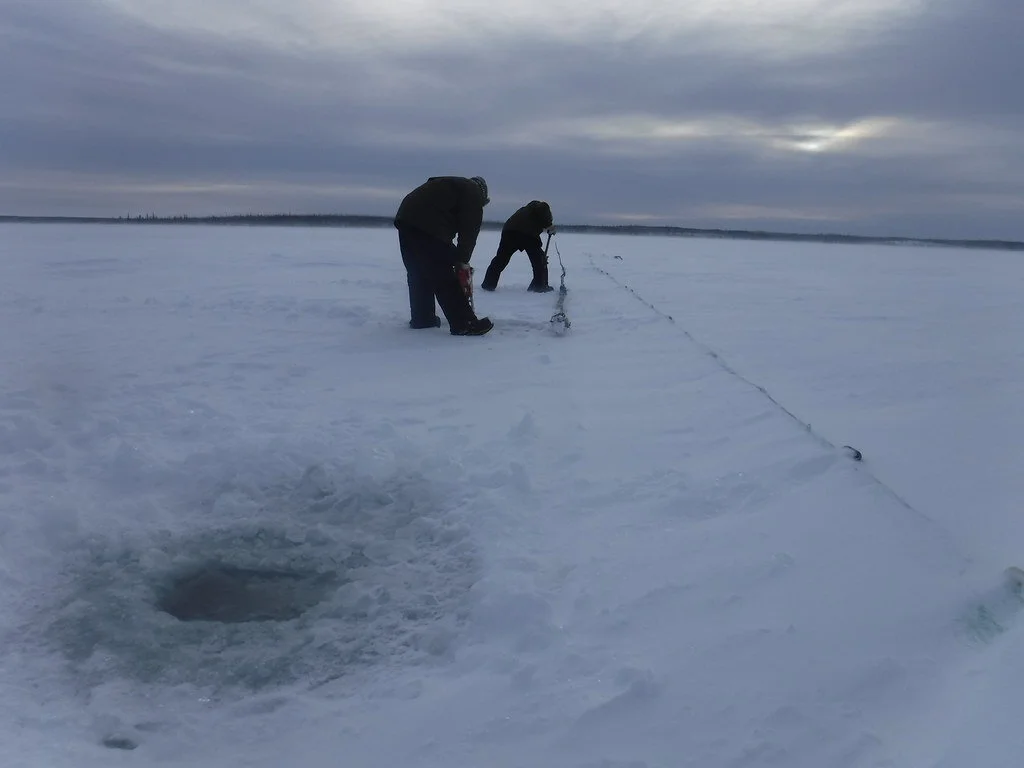
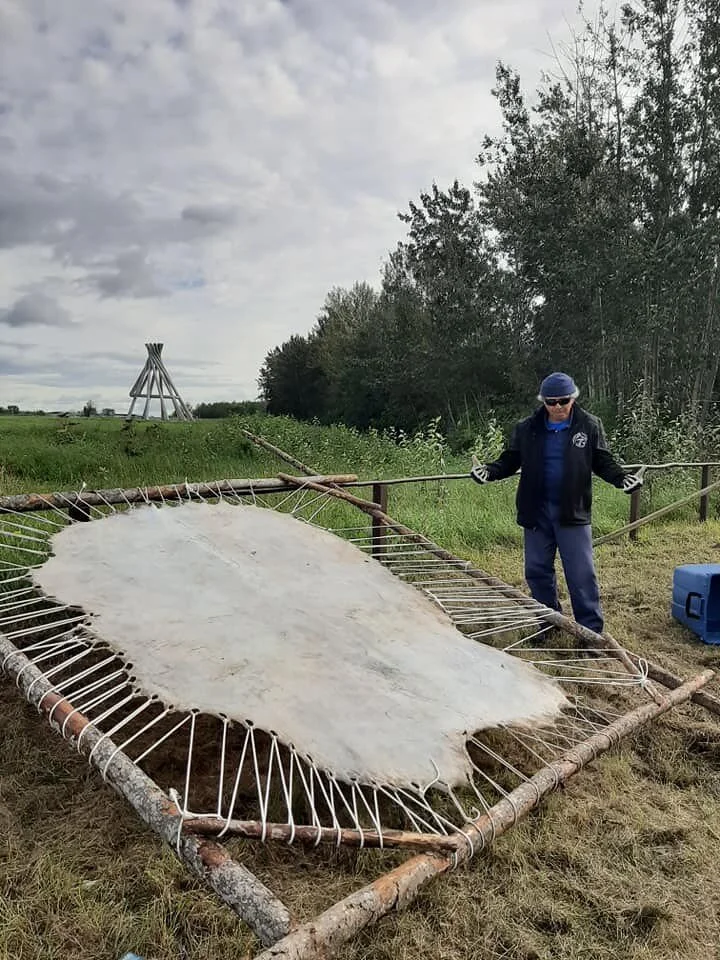
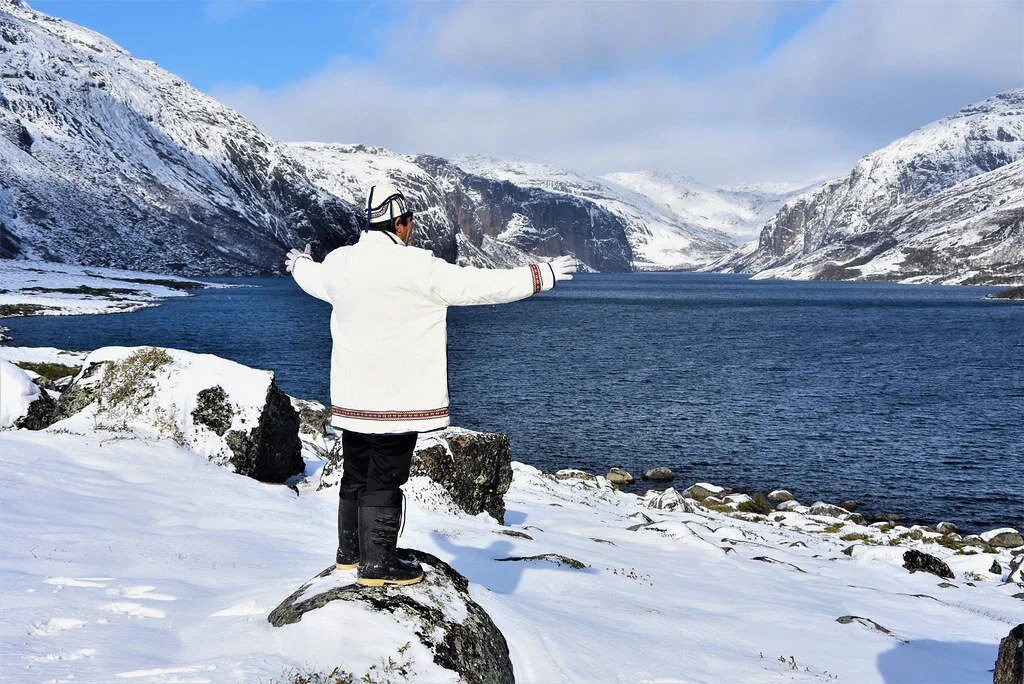
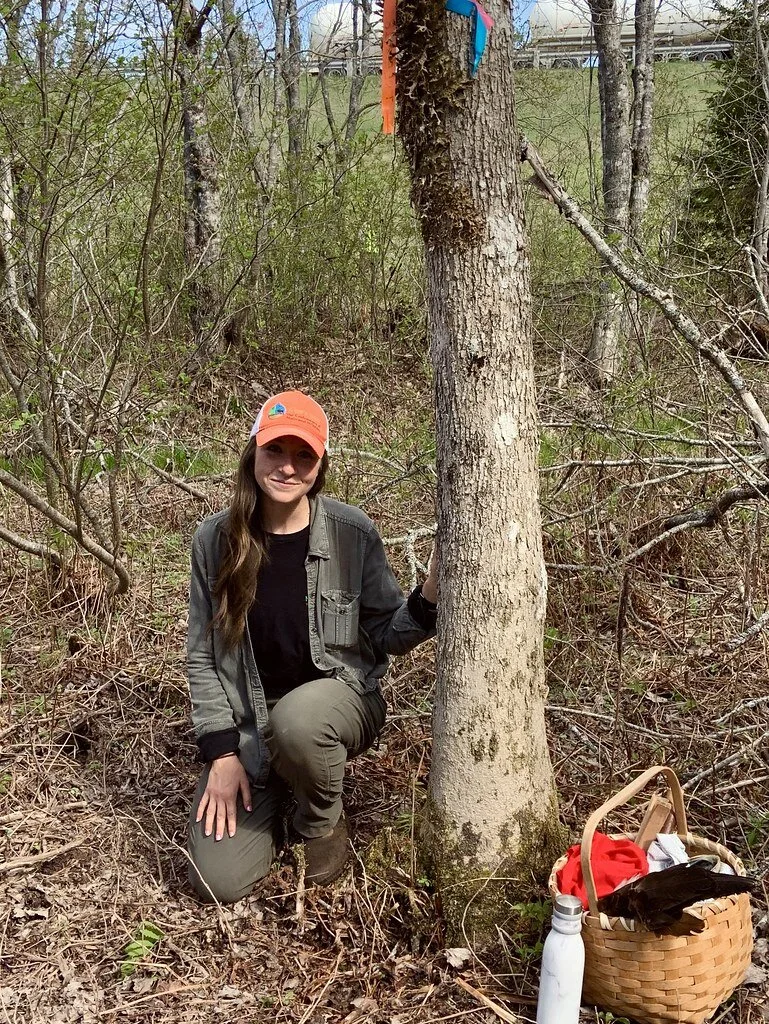
![“Greetings. My name is Charlotte Denny. I am from the Traditional Unceded MIMA Territory of the Maritimes from Eskasoni, Nova Scotia, the largest MIMA Reserve East of Montreal. I am MIMA Natural Resource Technician for our Un Magee Institute of Natural Resources. I work with the New G [foreign language 01:56:15] Earth Keeper Network, and that is being developed here in Nova Scotia. And our Earth Keepers are Guardians of our Traditional Territories to ensure proper harvesting of Wildlife Medicines, Natural Resources, without compromising its sustainability for future generations. This is a picture of me and my fellow observer during a Moose Survey in the Cape Breton Highlands National Park in Nova Scotia. It's a part of a Comprehensive Moose Management Plan that was developed in partnership with MIMA Grand Council, Una Magee Council of Elders, the Provincial Government, and the Federal Government.The Moose of Una Magee, were enlisted endangered in 2003, and the need to survey its Population, Distribution, Composition, and Sustainability of Harvest Levels. In 2004, the Survey Population was approximately the 4,200. So the Aerial Surveys, we go out and we survey the animals from 300 feet up. We basically have a team of four to five inside the Helicopter, and we document the Population in given six. There's Rectangular six, and the entire Cape Breton Highlands Park is all mapped out in different sex. And we pain stinkendly fly through each sect of the Highlands and calculate the numbers.The Moose Aerial Surveys plus the Hunter Reporting Data is important for calculating the Moose Populations and it's Health. So I participated in this Moose Aerial Survey in February 2020 in Partnership with Nova Scotia Department of Natural Resources and Parks Canada. Picture here in a Helicopter with a fellow observer from Parks Canada. I don't have any pictures of any Moose, unfortunately, because the fact that we couldn't effectively observe the Population and take pictures at same time. We're lucky we had a staff... 10 staff volunteers, and of our Una Magee, and Institute. And with the help with Parks Canada, and Department of Natural Resources. We had 12 flight days.A little History of the Moose, the Cape Breton Moose is from the Introduction of 18 LGS and Discerning Moose from Alberta that were introduced in 1947 and 1948. The Population exploded in numbers. But like I said before, there was a decline in Population in 2003, which led to them being listed endangered. So the exact number of Moose that we surveyed in February 2020, it's not really given to the General Public, but the current Population is showing sustainable Harvest Levels with the numbers above 10,000 I would say.”- Charlotte Denny](https://images.squarespace-cdn.com/content/v1/5f8367238502ed181766aaf0/1625172999251-PZSNJAXHQH5O8BNUBJLQ/51262261636_dc0afd85df_b.jpeg)
![“Hi, my name is Blythe Commando, I'm from Kitigan Zibi. I have been a guardian community for the past two and a half years. And as most communities, ours has noticed a steep decline in moose population on our traditional territory. In the past two years, Algonquin nation has put pressure on the government for a moratorium on the sport hunting a moose. An attempt to address this concern, an aerial moose survey was done to assess the population of moose and the [inaudible 01:18:46], which is located just north of our community. The survey was carried out by the provincial government and the Algonquin nation. Once the survey was completed and the data was analyzed, the government disagreed with us in the decline or the moose population and came to the conclusion that it was a healthy population for one that is hunted. The following season, Algonquin nation proceeded to erect roadblocks to restrict access to hunt sport hunters on our traditional territory. And this has carried off mainly on the grassroots level.Currently negotiations are still being carried out, but this was being done on a political level. The picture that you see was taken by my partner and I this winter and by using the training and experience that we received during the aerial survey, we were able to... Using drone technology we transfer into that. And after two days of flying, following old moose tracks, we then came upon fresh tracks. Once this happened, then an intensive grid pattern was flown until you were able to locate the herd. Once the herd was located, we proceeded to fly a circular pattern in order to identify it as sex of the herd. To me, this is a very awesome moment because after seeing moose in their natural habitat from the air, I didn't think I'd witnessed that again until that moment, there are other ways that we use drone technology and in our field of work. To name of few, would be checking road access, identifying stick nests, and flying over cut blocks, the sea of creeks and waterways being illegally operated by forest companies. The most recent application that we executed using drone technology, as we were able to locate the critical habitat for wood turtles. Once we were able to locate the specific site by air, we then proceeded by foot to the site and upon inspection, we then located five wood turtles, and we were able to verify that it is in fact, an active nested site. And So best to say, thanks for listening to me. And if anyone has any questions about the use of drones, I will be more than happy to help.”- Blythe Commando](https://images.squarespace-cdn.com/content/v1/5f8367238502ed181766aaf0/1625172819846-FG4203NCA2DRCCJA3AGW/51263307950_e30a7eb443_c.jpeg)
